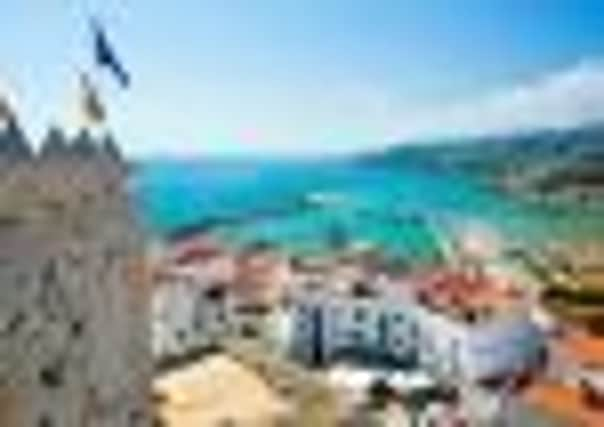The gain in Spain


The natural cave that bored straight through the 1,000-metre high, four-kilometre long limestone wall of the Berniere Ridge on Spain’s Costa Blanca was only 20 metres long. But a crouching, crawling passage through its narrow, bumpy length led me from the heights of the rugged, rural Spain I had come to visit to a bird’s-eye view of the beaches and the glittering azure sea that draws millions of visitors every year.
Benidorm’s ranks of tourist hotel towers were visible a few kilometres away. I had emerged from the “other Spain” – a spectacularly wild landscape of steep gorges, forbidding peaks and ridges, sweeping hillsides dotted with remote dwellings and hamlets, serried ranks of stone terraces of almond and cherry trees, vistas of valley lands of orange and lemon groves, and acres of grape vines. Rural Spain is tantalisingly close to the beach culture that attracts visitors by the planeload yet is so untouched by popular tourism that there remain areas where you can walk all day yet meet no one.
Advertisement
Hide AdAdvertisement
Hide AdOnce through the cave, I picnicked under a blue sky among the ruins of a 16th century Moorish fortress high on the ridge overlooking the coastas a herd of goats, bells clanking, foraged on the scree far above. The holiday base was the 17th century, traditionally decorated Casa Carrascal hotel tucked away along a narrow, colourful street in the tiny hilltop village of Parcent, overlooking the orange groves, almond trees and grapevines of the Jalon Valley. It’s in the Marina Alta region of Valencia and just over an hour’s drive from Alicante airport.
It is owned and run by David and Sue Eaton, from Oxford, who exchanged the long hours and stress of jobs in the UK to fulfil their vision of a life organising walking holidays in Spain.
The couple also guide the walks and are knowledgeable about the area’s history, traditions and nature, pointing out bird life along the way, including eagles and other birds of prey, and some of the hundreds of varieties of flower and plants.
Tiny Parcent, population 1,000, is ideally situated with some walks starting from the village itself. The village is surrounded by mountain ranges, and safety conscious David and Sue pick their circular treks from 32 routes they have researched, though there are nearly 70 more in the area.
Advertisement
Hide AdAdvertisement
Hide AdOne walk on the spectacular Caballo Verde Ridge – high above the village – was the site of a battle between the Moors and the Christians in the early 17th century, and a dramatic memorial cross now sits high above on the skyline.
Some of the trails were forged by Arab traders centuries ago, and one walk finished with a muscle-burning zig-zag trek up 2,000 steps cut into a steep hillside. The hillsides are dotted with ruins of deserted dwellings, farmhouses and inns, and the steep slopes are stepped with centuries old stone terraces. Elsewhere, though, groves of almond, cherry and vines still flourish on parcels of cultivated land.
The winding road to the top of the Coll is part of the Tour of Spain cycle race – and I spotted painted names of stars including the UK’s Mark Cavendish still visible on the road surface near the top of the long, curving climb from the valley floor.
With the sea within such easy reach, it is easy to see why parts of the coast near Parcent were the haunt of contraband runners. Tiny, cliff-ringed Smugglers Cove (near the pretty resort of Moraira) was so notorious the police use to man a tiny watch post on the beach.
Advertisement
Hide AdAdvertisement
Hide AdI spent one day exploring the sights of the elegant city of Valencia – with its cathedral, bull ring, world heritage site silk market and street cafes. But it was the mountains that thrilled the most, and being able to come down to the valley floor, tired after a long day, look up and say: “I was up there” was satisfaction itself.